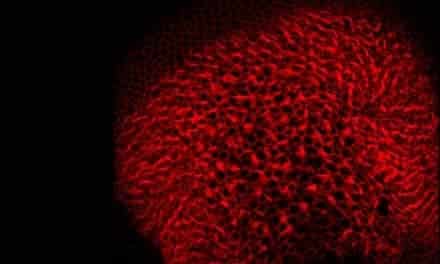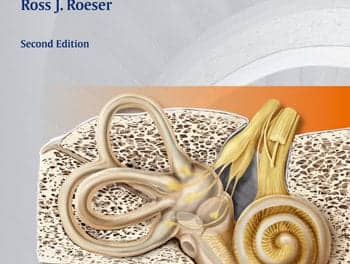A team of University of Miami Miller School of Medicine faculty, along with collaborators from the University of Pittsburgh, presented what is said to be “the first report” of acute symptoms and clinical findings in 25 diplomatic personnel living in the US Embassy in Havana, Cuba, who experienced severe neurosensory symptoms after exposure to a unique sound and pressure phenomenon, U of Miami announced on its website.
“Objective testing showed evidence of a balance disorder that affects the inner ear and a unique pattern of cognitive and behavioral dysfunction,” said Dr Michael E. Hoffer, professor of otolaryngology and neurological surgery. “This cluster of auditory and neurological symptoms, along with associated psychological issues, does not resemble more classic traumatic brain injury (TBI) based on our team’s vast experience in this area.”
Hoffer was lead author of the study, “Acute findings in an acquired neurosensory dysfunction,” published in the peer-reviewed journal Laryngoscope Investigative Otolaryngology. The Miller School study included a review of 25 individuals at the US Embassy who reported a localized sensation of noise/pressure and 10 individuals who were roommates of those affected and did not experience the phenomenon.
“This is the first and only report of the acute presentation (seen shortly after exposure) in this unique group of patients,” said Hoffer. “Our findings are not biased or influenced by the effects of time, variable amounts of rehabilitation, workers compensation concerns, or media attention. It is an important contribution to this field, and these data will provide further insights into determining what happened.”
Carey D. Balaban, professor of otolaryngology, University of Pittsburgh School of Medicine, was co-author of the study, along with the Miller School’s Hillary Snapp, associate professor of otolaryngology and chief of audiology; Bonnie E. Levin, professor of neurology and director of the Division of Neuropsychology, and doctoral student James Buskirk.
“Understanding the acute symptoms is important in order to better define the clinical presentation which we hope will lead to more accurate diagnosis in future cases,” said Levin. “Furthermore, careful documentation of the initial injury pattern is needed to develop effective preventive and treatment strategies. We believe our findings bring to light the complexity of the acute clinical picture which is best addressed by a team of researchers.”
“The collaborative study shows the power of a large interdisciplinary team that spans specialties and universities,” said Balaban, who has studied the circuits to the brain relating to balance disorders, anxiety, and migraines in patients at the University of Pittsburgh. “A holistic integrative approach is vital for understanding the scientific basis of this complex disorder.”
“This is a perfect example of how academic medicine brings together expertise and collaboration in the name of discovery and science,” said Dr Henri R. Ford, dean and chief academic officer of the Miller School of Medicine.
The onset of symptoms
Beginning in late 2016 and continuing into 2017, a number of US diplomats and family members stationed in Havana began to report complaints of sudden-onset dizziness, ear pain, and tinnitus. Most of the affected individuals reported hearing an unexplained noise before the symptoms began. They noted the sound was loud, localized, at a high frequency and could follow them throughout a room. Several individuals reported that if they went outside their front door, the noise immediately stopped. Others reported a sensation of pressure passing through their head and abdomen in certain parts of the room that could be relieved by moving a few feet away.
In February 2017, Hoffer, a former military officer with security clearance, was contacted by the US State Department about an individual who reported hearing an odd noise followed by intense ear pain and tinnitus. By the next morning, the individual was dizzy and had mild cognitive issues, such as processing emails slowly and forgetfulness.
Evaluating the cases
Over the next few months, the Miller School team conducted evaluations of all individuals who suspected they were affected between 4 and 60 days after exposure, as well as a larger group of 105 embassy workers who denied any “exposure” to noise or a pressure sensation.
The evaluations were carefully coordinated and conducted by multidisciplinary medical teams from otolaryngology and neurology. “Our broadly scoped team of 15 audiology and neurotology specialists draws on our advanced vestibular testing technology for diagnosis and treatment and management, thanks to the Miller School’s longstanding investment in our clinical program,” said Snapp.
All of the 25 individuals with symptoms noticed unsteadiness and features of cognitive impairment, according to the study. Dizziness (92%) and cognitive complaints (56%) were the most common symptoms. Formal testing revealed that 100% of individuals had an otolithic (balance) abnormality and evidence of cognitive dysfunction, as documented by a battery of standardized measures.
After the evaluations, a number of the patients were treated for balance, cognitive, and emotional disorders.
“We reviewed options for therapeutic interventions to address their physical, mental, and emotional issues,” said Levin.
Considering the cause
While the Miller School study did not attempt to determine the cause of the symptoms in the US Embassy residents, the authors noted that intense ultrasonic radiation can produce “a syndrome involving manifestations of nausea, headache, tinnitus, pain, dizziness, and fatigue,” based on occupational health literature. “The exposure responsible for these findings is unknown,” said the co-authors. “It would be imprudent to exclude any potential directed or non-directed energy sources at this time.”
In their study, the authors recognized Kurt Yankaskas, program manager at the Office of Naval Research, for comments helping to clarify the work; Alexander Kiderman, chief technology officer at NKI, for designing the software and hardware used to analyze these patients; Dr Constanza Pelusso, research director in the Department of Otolaryngology, for her help in filing all necessary patient research forms and reports, and Danierys Font for her assistance in scheduling all of the patients.
They also thanked Dr Fred Telischi, professor and chair of the Department of Otolaryngology; Dr Anthony Etzel, vice chair of administration inthe Department of Otolaryngology, and Dr Ralph Sacco, professor and chair of the Department of Neurology; as well as the audiologists, nurses, and staff of the Department of Otolaryngology for their assistance in caring for these individuals.
Original Paper: Hoffer ME, Levin BE, Snapp H, Buskirk J, Balaban C. Acute findings in an acquired neurosensory dysfunction. Laryngoscope Investigative Otolaryngology. 2018:1-8. DOI: 10.1002/lio2.231
Source: University of Miami Miller School of Medicine, Laryngoscope Investigative Otolaryngology





